the place where Paleontology and Paleoanthropology meets Philately
Brazil
Dinosaurs, fossils, paleontologists on stamps and postmarks of Brazil
| << previous country | back to index | next country >> |
Contents:
- Country overview
- Philately of Brazil
- Official stamps of Brazil related to Paleontology
- Some personalized stamps of Brazil related to Paleontology
- Commemorative postmarks of Brazil related to Paleontology
- References
- Acknowledgements
Brazil officially the Federative Republic of Brazil is the largest country in both South America and the Latin American region.
Brazil has an area of 8.5 million square kilometers and population of over 211 million.
It is the largest Portuguese-speaking country in the world and the only one in the Americas.
Bounded by the Atlantic Ocean on the east, Brazil has land borders with Ecuador and Chile.
Between 1500 and 1822 Brazil was a Portuguese colony. In 1822 he Empire of Brazil, a unitary state governed under a constitutional monarchy and a parliamentary system, was establishd. [R1]
Brazil was the second country in the world, after Great Britain, to issue postage stamps valid within the entire country.
Like Great Britain's first stamps, the design does not include the country name.
The first stamps of Brazil were issued on 1 August 1843 and are known as "Bull's Eyes" due to their distinctive appearance.
On 1st July 1844 a new series was issued which is known as the slanted numeral series. For many years stamps from Brazil had "Brasil Correio" displayed on them. However today the trend is to just have the country name and year, e.g. Brasil 2000. [R2]

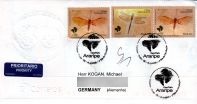
 Brazilian FDCs today are on white covers with no cachet or illustration.
These FDCs are engraved with the name of the Post: Correios.
Brazilian FDCs today are on white covers with no cachet or illustration.
These FDCs are engraved with the name of the Post: Correios. Some dealers and collectors uses the empty place on the left side of the cover to print their own images, to create more attractive FDCs.
Official stamps of Brazil related to Paleontology: dinosaurs, fossils, paleontologist
| 08.07.1975 "Archaeological Discoveries " [1] | 06.06.1991 "Dinosaurs and Snakes" | 23.07.1995 "Dinosaurs" |
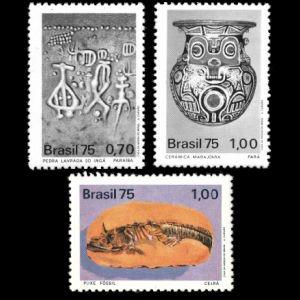 |
 |
 |
| 17.04.1999 "IBRA 99; Valley of the Dinosaurs" | 14.06.2010 "Peter Wilhelm Lund, Danish paleontologist" | 12.10.2014 "Prehistoric Animals of Brazil" |
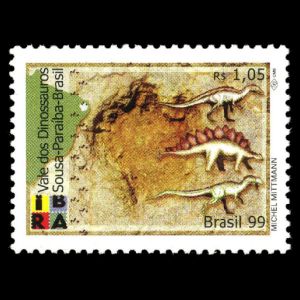 |
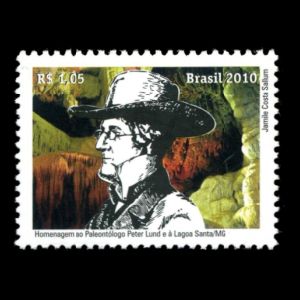 |
 |
| 21.11.2016 "Geopark Araripe" | ||
 |
|
 |
Notes:
[1] Fossil fish (Belonostomus comptoni) from Ceara, shown on one of the stamps.
Belonostomus (meaning "big long mouth") is a genus of prehistoric ray-finned fish that was described by Louis Agassiz in 1844.
The fish lived between 99.6 million and 66 million years ago. [R3]
[2] Peter Wilhelm Lund (14 June 1801 – 25 May 1880) was a Danish paleontologist, zoologist, archeologist and who spent most of his life working and living in Brazil.
He is considered the father of Brazilian paleontology and archeology.
Lund was the first to describe dozens of species of pre-historic Pleistocene megafauna, including the fabled Saber-toothed cat Smilodon populator.
Peter Lund also made the then ground-breaking discovery that humans co-existed with the long-extinct animal species, something which possibly prompted him to terminate his scientific work. [R4]
Some personalized stamps of Brazil related to Paleontology: prehistoric animals
| 11.10.2013 "20 years of the discovery of the first fossil from Marilia" | 12.12.2019 "Prehistoric animals of Parana region" [SP1] | ??.??.?? "Valley of the Dinosaurs, Paraiba" [SP1] |
 |
 |
 |
Notes:
[SP1] issued in sheets of 12 (4x3) with increased images on the top.
These sheet is too big to feet to any standard stamp album and very inconviniet to store.
Commemorative postmarks of Brazil related to Paleontology: dinosaurs and its footprint, prehistoric animals, paleontologist.
Legend is here| 14.06.1968 "167 years of Peter W. Lund" [Sp] [2] | 14.08.1975 "Archaeological Discoveries" [Sp] [1] | 07.08.1980 "3rd Philatelic show in Bauru" [Sp] |
 |
 |
 |
| 25.05.1980 "100 years since death of Peter W. Lund" [Sp] [2] | 10.05.1981 "Philatelic Exhibit of Clube Atletico Indiano" [Sp] [2] | 26.05.1985 "Brapex VI - Peter W. Lund" [Sp] [2] |
 |
 |
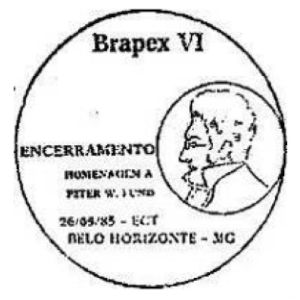 |
| 06.06.1991 "Dinosaurs and Snakes" [FDC] | 19.09- 26.09 1993 "13th Paleontologic congress" [Sp] | |
 |
 |
|
| 23.07.1995"Dinosaurs" [FDC] | 23.09- 29.09 1995 "14th Paleontologic congress" [SP] | |
 |
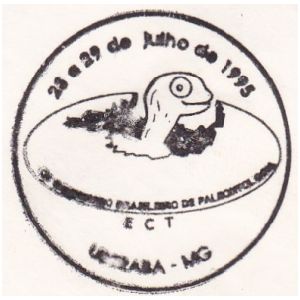 |
|
| 21.06- 26.06 1998 "American Symposium of Silurian - Devonian periods" [SP] | 17.04.1999 "IBRA 99; Valley of the Dinosaurs" [FDC] | 14.06.2010"Peter Wilhelm Lund, Danish Paleontologist" [FDC] |
 |
 |
 |
| 11.10 - 09.11.2013 "20 years of the discovery of the first fossil from Marília" | 12.10.2014"Prehistoric Animals of Brazil" [FDC] | |
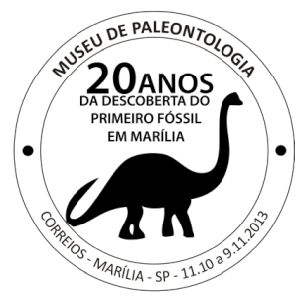 |
 |
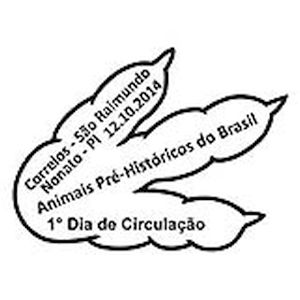 |
| 12.10.2014 "Prehistoric Animals of Brazil" [FDC] | 21.11.2016 "Geopark Araripe" [FDC] | |
 |
 |
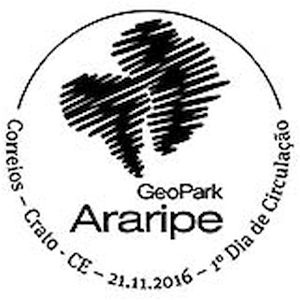 |

|
[R1] Brazil: [R2] Postal History and Philately of Brazil:
- Postal history of Brazil: Wikipedia
- Links to official website of the Post Authority, stamp catalog and a list of new stamps of Brazil are here
Acknowledgements:
Many thanks to Dr. Peter Voice from Department of Geological and Environmental Sciences, Western Michigan University, for reviewing the draft page and his very valuable comments.
| << previous country | back to index | next country >> |